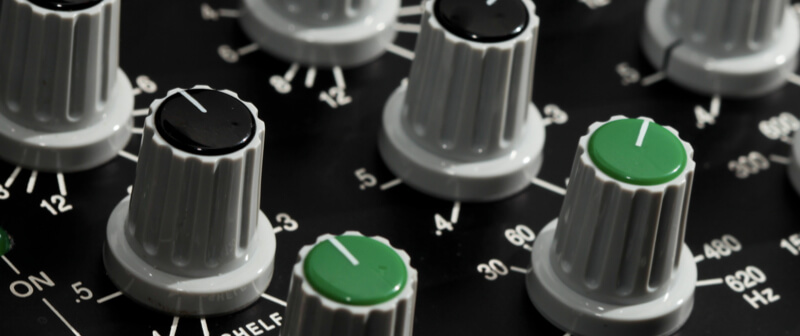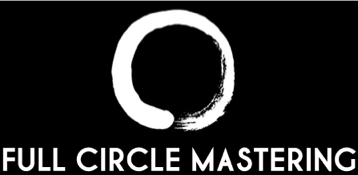
Frequently Asked Questions
1) What do I need to provide you (file formats, submission info, etc.)?
All digital audio file formats are accepted. Lossless audio files (i.e. WAV, AIFF, etc.) are greatly preferred over lossy formats (i.e. MP3, AAC, etc.) as better results will be achieved when working with lossless audio files. Likewise, 24-bit (or 32-bit) files are preferred over 16-bit files.
Files can be sent for free using our WeTransfer Plus page. We can also work from data CDR’s, data DVD-R’s, audio CD’s, USB flash drives, external hard drives or any device with analog, S/PDIF coaxial, S/PDIF toslink or AES/EBU outputs.
When submitting files please include the following:
- Artist name
- Album title
- Track order
- Release plans: Digital download/streaming, CD, vinyl, cassette or some combination thereof?
Feel free to include any other information you think would be helpful:
Does your album have to be the loudest on the block or are you more comfortable preserving the dynamics? Are there any specific fade-ins, fade-outs, or cross-fades that you would like on any of the tracks or track transitions? Is there a particular noise, click or pop in a track(s) that you would like to try to remove/lessen? Etc.
2) Do you have any advice on preparing a mix for mastering?
Please do not use a peak limiter on your 2-bus (master fader) or clip your mixes. This processing can’t be undone (well) in mastering and gives the mastering engineer much less opportunity to work with the mixes.
There should be some headroom in your mixes. Shoot for a maximum peak level of anywhere between -24dBFS and -3dBFS.
24-bit (or 32-bit) files are always preferred over 16-bit files. Even if you are working with 16-bit source material it’s recommended that you bounce your mixes at 24-bit (or 32-bit).
Do not up-sample or down-sample your current file format. For example, if you’re working at 48kHz please provide files at that same sample rate.
Avoid compression on the 2-bus for the sake of making the mix sound louder. If you’re using compression on the 2-bus as part of the aesthetics of a given mix however that’s fine. When in doubt submit two versions, one with 2-bus compression and one without.
3) How long will it take you to master my project?
This largely depends on studio scheduling at the time of receiving the final mixes or the booking of an attended session as well as the size of the project. Our workload can vary. Sometimes we’re completely booked weeks in advance, other times your album, EP or single can be worked on within 72 hours or less.
Due to this it’s highly recommended that you send in your final mixes or schedule an attended session as far in advance as possible of any deadlines you may have. We do our best to accommodate rush projects whenever able but the more leeway given the better for everyone involved.
4) Can you elaborate on vinyl mastering?
We can provide you with 24-bit masters optimized for vinyl cutting. When creating masters for a vinyl release special attention needs to be given to loudness in a way that’s a bit different than mastering for digital release (primarily a reduction in peak limiting).
There is more that goes into transferring your digital masters to vinyl than that; elliptical EQ (collapsing the low-end to mono), low-pass-filtering, high-pass-filtering and even sometimes additional de-essing. However these types of processing decisions are always best left to your vinyl cutting engineer to make (if they’re even needed at all). What they want from us (mastering engineers) is sequenced 24-bit files with a reduction in peak limiting (perceived loudness).
If your project is going to be released both in a digital format as well as vinyl it’s recommend that you get separate masters specifically tailored for each medium.
5) I’m going to release on cassette, can you provide me with masters for cassette?
Sure. The process is the same as for vinyl masters as well as the cost. Masters provided for cassette can also be used for vinyl cutting and vise versa.
6) What is “Mastered for iTunes” (MFiT)?
In 2012 Apple released some documentation and software tools for mastering engineers in order for us to achieve the best results when mastering music that is to be released in the iTunes Store. All music in the iTunes Store is encoded with Apple’s AAC codec. This codec performs best with 24-bit files with a max peak level no greater than -1dBTP.
Full Circle Mastering is an Apple certified Mastered For iTunes studio.
7) I have decided to go back and rework some things in a track that you already mastered, can you master it again?
Yes, but this is subject to a fee, depending on the nature of the mix changes.
If it’s just a small change or two and settings here can remain the same or extremely similar to the previous mix version the cost is 50% the prior rate for the track. If however there are major changes or numerous changes to the mix it will have to be approached as if it were a new mix and thus billed accordingly at the full per track rate.
8) Do you offer stem mastering? If so, how much?
Yes. Rates for stem mastering vary according to the number of stems and the nature of the mixes. Please contact us to get a quote.
9) What is a Disc Description Protocol image (DDPi)?
A DDPi is essentially a digital file set of a Production Master CD (PMCD). All PQ data including CD-Text, ISRC codes and a UPC code can be contained within the digital file set. Generally it’s recommended to get a DDPi as opposed to a PMCD for CD replication/duplication (it’s also priced less since no physical media is involved). There are a few rare exceptions though where a PMCD may be preferable, please inquire if you’re unsure of which to get.
10) What is a Production Master CD and what is a Reference CD?
A Production Master CD (PMCD) is a Red Book formatted audio compact disc. PMCD’s are burned at optimum speed using a high quality burner onto high quality blank media. Metadata such as ISRC codes, CD-Text and a UPC code can be embedded if requested.
They’re error checked for C1, C2 and CU errors using the PlexTools Professional XL software and a Plextor optical disc drive. PMCD’s are intended for replication/duplication only and should remain safely stored in their case until then. A PQ sheet and CD error report print-out are included.
A Reference CD is a copy of the PMCD but without the extra step of error checking. Reference CD’s are intended for listening purposes and not replication/duplication. One Reference CD is included free of charge with every PMCD.
11) What are ISRC codes?
ISRC codes are a 12 character long digital signature that allows for the tracking and management of songs in the digital domain. If you would like ISRC codes embedded on your DDPi or Production Master CD you must provide them to us prior to your DDPi or PMCD being created.
To obtain ISRC codes in the USA contact the US ISRC:
To obtain ISRC codes outside the USA contact the IFPI:
12) What is CD-Text?
CD-Text is often confused with the CDDB (Gracenote database). It includes basic information about your album (artist name, album title, track titles, year, etc.). It’s used by only a small percentage of CD players; primarily car and home stereos that have an LCD display and are CD-Text enabled. CD-Text is not commonly used by software media players.
If you would like CD-Text embedded on your DDPi or Production Master CD please provide a text document or email with all your album info (artist name, album title and track titles) exactly as you would like it to appear with attention to spelling and capitalization. The CD-Text info you provide is always copy-pasted to avoid typing or spelling errors on our part.
13) How do I get my CD’s album information to appear in iTunes or other digital media players when inserted into a computer’s CD/DVD drive?
To get your CD’s album information to appear in iTunes (and most other digital media players) you need to upload the info to the CDDB (also referred to as the Gracenote database). The CDDB is a user-updated online database.
The easiest way to go about this is to insert one of your replicated CD’s into the optical media drive of an online computer, fill out all your album information in iTunes and then click “Options” in the upper right hand corner of the window (“Advanced” pull-down menu in earlier versions of iTunes) followed by “Submit CD Track Names…”. Your album’s info will then be uploaded to the CDDB and anyone using iTunes (or similar programs that connects to the CDDB) will retrieve your album’s info upon inserting your CD into their online computer. Please note it can take a few days for the listing to become “live”.
For more information visit:
14) Can you make my album louder than a rocket launch?
Sure, but it’s definitely not recommended. Over the last 25 years or so you have probably noticed CD’s (and all other digital audio formats) have been getting progressively louder. The problem with this is that digital audio has a fixed volume capacity. A popular trend over the last two plus decades has been the use of extreme amounts of peak limiting and compression in order to increase perceived loudness. By doing this there is a huge sacrifice resulting in loss of dynamics, depth and clarity. All of these downsides simply for the purpose of making an album, EP or single slightly louder than another.
At Full Circle Mastering we like to walk the balanced path regarding the “loudness war”. We will help you achieve both an optimal volume level while keeping dynamics, depth and clarity intact so your music sounds great on all playback systems.
For more information on the topic of loudness please visit:
Turn Me Up | Bring Dynamics Back To Music
Spectrum – The Future of Music
